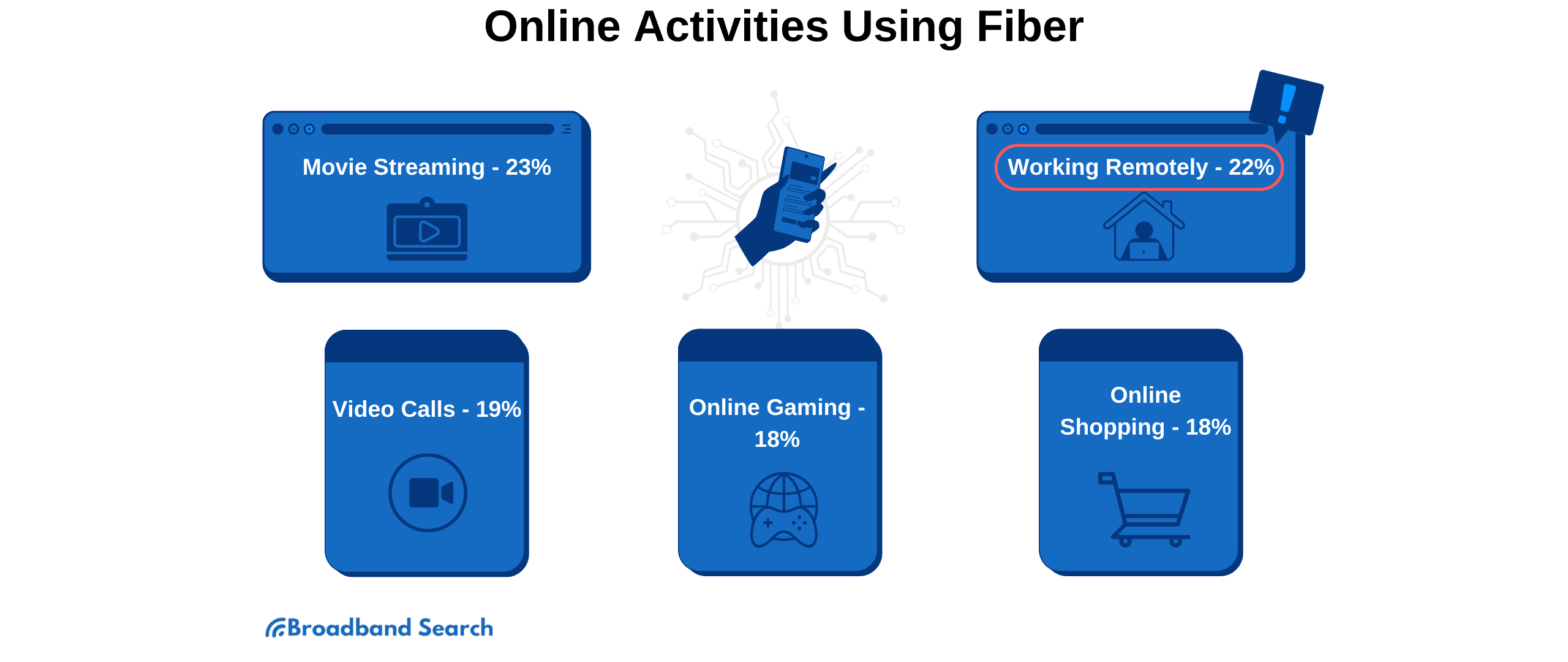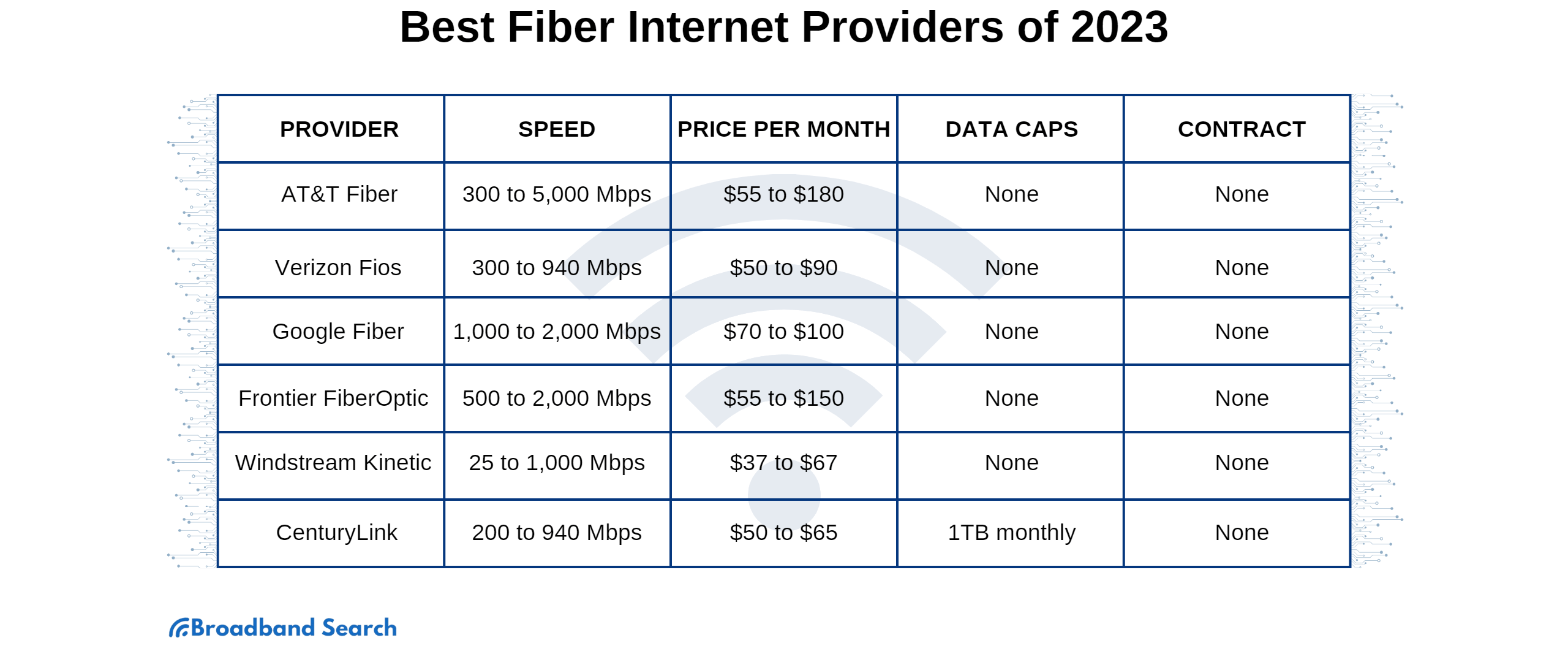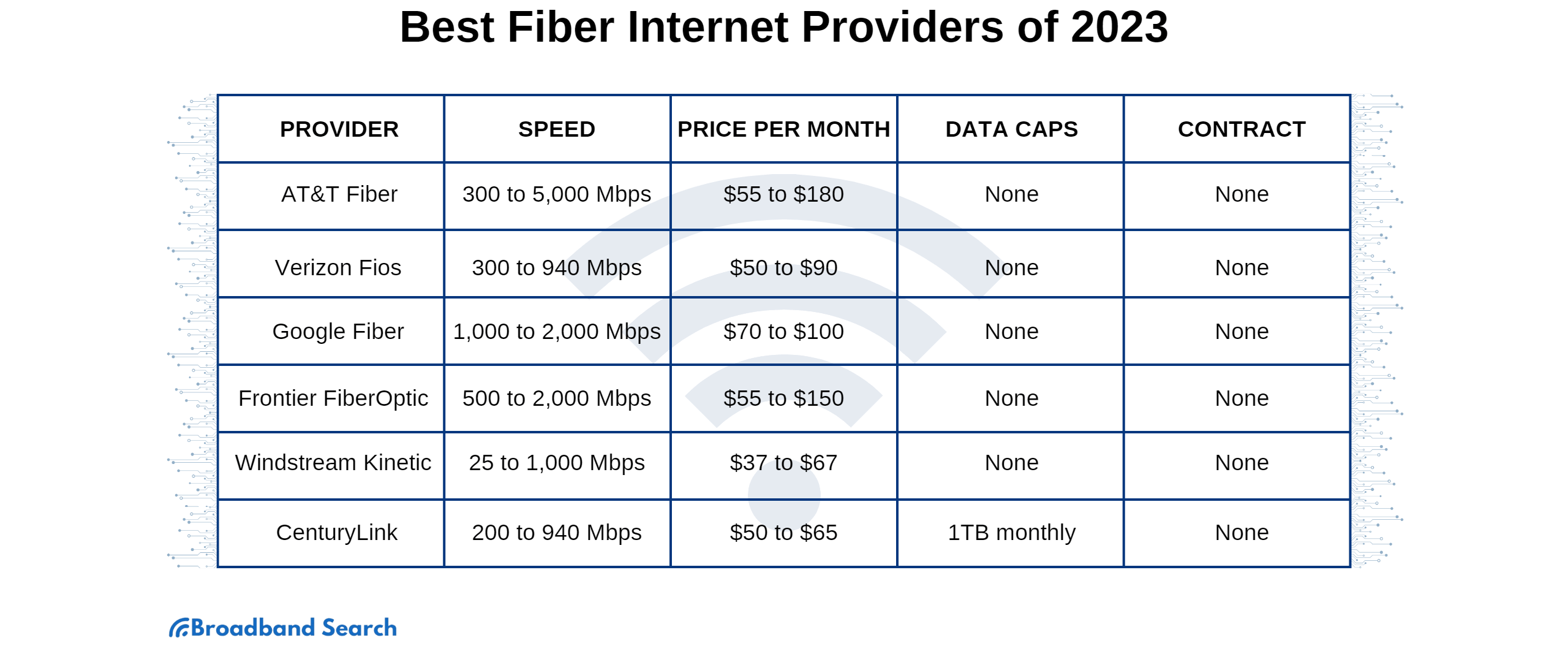Working from home has become more typical and often more necessary than ever. While remote work dates back decades and even before the dawn of the modern internet, we saw a massive spike in due to the COVID-19 pandemic. Offices had no choice but to go remote, and employees, managers, and entire office ecosystems had to adapt quickly. This certainly had its benefits, but it also increased dependence on digital communication. This, in turn, led to an increased need for bandwidth and dependable internet service, which will be our main topic in this piece.
According to the 2021 American Community Survey (ACS), the number of people working primarily from home has tripled from 9 million (5.7 percent) to 27.6 million (17.9 percent). This is not considering the peaks of the pandemic and the fact that millions more might not work primarily from home or remotely. More and more jobs require no physical presence in the United States and beyond.
This brings us to fiber internet, which is currently the best option for an internet connection. What is a fiber connection? Is it needed for a good remote work setup? What do you need to know about it? Let’s explore those questions and more below.
What is a Fiber Internet Connection?
A fiber internet connection generally referred to as fiber internet, is a type of broadband service that primarily uses fiber optic cables to provide internet service. These are specialized cables that are comprised of many thin glass or plastic strands, each about the width of a human hair. These strands transmit signals as pulses of light and can do so rapidly, far outpacing any other service we currently have. With most plans, download speeds are regularly 1 Gbps, though speeds can be much higher for some select customers. The only reason for that limit, which is more than enough for nearly any household, is so there is enough bandwidth for everyone.

So why doesn’t everyone have it? Fiber cables are generally placed underground, which means a bit of an in-depth fiber installation process if the cables aren’t already there. Therefore, we usually only see fiber internet in more populated areas or places where the cables existed beforehand for some reason. However, we are seeing the expansion of the service, and you should look for more information about fiber in general and in your area.
Types of Fiber Connections
While all fiber connection types work the same as a whole, utilizing fiber optic wires, there are some differences to consider. Fiber optic internet is classified into a few types depending on how far the fiber optic cables are from the modem that translates the signals. There are currently three main categories:
FTTH or FTTP: “Fiber to the Home” or “Premises”
This is the fastest option. The fiber optic connection will come straight to your door with no changeover or interruption. There might only be a bit of coaxial cable for the last few feet before it gets to your modem. There is no delay in the connection, and users can notice the difference. It is also considered future-proof regarding internet setups in general and doesn’t need as much servicing as other setup types. While all fiber is fast, FTTH or FTTP is the fastest.
Yet if it’s the fastest and all-around best, why isn’t the model used in all cases? It can be expensive to set up in the first place. It can also be more time-consuming. This means that to expand fiber rapidly or cost-effectively (at the time), FTTC or FTTN setups were used.
FTTC: Fiber to the Curb
With an FTTC setup, the fiber optic wires get to a utility pole or a cabinet outside your home, but that’s as far as the connection fiber goes. A coaxial cable is used for the “last mile” between the pole and your modem. This puts a slight delay or a bottleneck on the connection, but it is still extremely fast and will be enough for the needs of most, if not all, remote workers.
Engineers used this as an option to find a balance between the speed of cable and the relative cheapness of using copper wire. There are other advantages as well, including a steady and error-free setup. There can be some signal degradation in this last bit of the journey, but it is minimized, given how little copper wire is used.
FTTN: “Fiber to the Node” or “Neighborhood”
A step back from FTTC setups is the FTTN model. It uses the least amount of fiber optic cable and more copper. In this setup, the fiber connection “terminates” at a node in one’s neighborhood or area. Then the signal is sent through a copper wire to your home. This can be a fair distance, potentially reaching miles depending on the user's distance from the node. And the copper wire simply isn’t capable of the same speed or consistency as the fiber optic cable. Therefore, while fast and a better option than most other service types, this is considered an inferior fiber service.
On the other hand, this is a more straightforward method for engineers to set up and is cheaper. This means more connections can be created in areas that might take time to get fiber service. Check whether FTTN is the type of fiber connection you’re getting before you sign up.
Benefits of Using Fiber Connection for Remote Work
A fiber connection can provide an internet connection that is 20 times as fast as a standard cable connection. It can do even better compared to other internet service types. This makes it beneficial for remote work or home-based businesses to work from. It simply is better and can do more. Spotty video calls will be a thing of the past, and downloading or uploading large work files won’t be a major concern like they otherwise might be.
Yet what are the main benefits you should consider? Here are the key ones to know about:
Speed
Fiber optic cables can transmit information at about 70 percent of the speed of light. Until laser or quantum internet comes around, you can’t do much better than that. Most fiber internet plans have 1 Gbps download speeds. This makes huge downloads of even large games (the largest files an average user might download) happen in minutes, and any work-related files download almost instantaneously. Whatever pages or information you need, you can get it with a fiber connection. This dramatically reduces the need for a physical office and allows easy video conferencing.
Upload speeds with fiber plans are generally high or simultaneous with the download speed, meaning that convenience goes both ways. There will be few interruptions when it comes to employees being able to do their tasks. If you work remotely now, think about what tasks you need to do online. What requires a fast connection? Fiber internet can handle it, no matter your answer.
Security
Fiber internet connections have a better security as well compared to other service types. It might be possible to read data going over lines with other service types, difficult as it may be. Fiber makes this much harder. A fiber connection can only be disrupted physically compared to other service types. Someone would need to break the fiber optic cable. And given that most lines are buried underground, someone would need to try very hard to do that. It’s not perfect, but nothing is, and fiber is the most secure option we currently have, all else being equal.
Bandwidth
Heavily related to speed, bandwidth measures how much data a connection can handle at once. Think of it like the number of lanes on a highway compared to how fast the cars are moving. The more bandwidth one has, the more one can do at once, which is always better. If you have a lot of connected devices at home (perhaps you have a smart home setup or a smart security system) or need to make multiple downloads at once, then bandwidth is vital to you.
As noted before, fiber internet is capable of equal upload and download speeds. This means that transfers of files are easy, as it backing up to the cloud. With the bandwidth fiber internet provides, remote workers can do whatever they need to.
Independent to Weather
Fiber internet uses light to transmit information through cables. As such, it isn’t as vulnerable to the effects of bad weather. Unlike satellite internet, rain or cloud coverage doesn't affect the signal. Additionally, since both fiber cables are in the ground, the service might not be affected by lines coming down or heavy winds. Though it should be noted that your fiber connection isn’t worth much without electricity, so the weather can still affect your connection in a practical sense.
While the weather will not affect fiber optic internet users so much, it should be noted that some disasters and problems can be an issue. Earthquakes can disrupt the lines underground. Major flooding can cause issues. Fiber internet isn’t immune to natural disasters, though no internet service type is perfect. It might be better to think of fiber internet as the most consistent option as opposed to one immune to nature.
Sustainability
Fiber internet is an option that is more sustainable than many other types of internet service, using flexible glass strands. These strands are unaffected by electric surges, wetness, or cold. The signal is light instead of electricity; as such, the cables and the signal aren’t so bothered by the elements or time so long as they are installed and appropriately protected. The cables may require replacement, but maintenance isn’t nearly as intensive as other internet service types.
Additionally, fiber optic cables are more future-proof and future-ready than many other technologies and are more adaptable. Fiber internet will be used for decades to come, and installation of it is generally a good investment as long as there are people to use it. And often there are extra fiber lines installed under the ground for use when they might be needed (look up “dark fiber” when you get a chance).
Fiber Internet Providers
Fiber internet has surpassed all other connection types, including 5G, in terms of speed. There simply isn’t any better option available to consumers, and there isn’t a need for one currently. Users can expect a fast and consistent speed from a fiber connection, which makes it helpful for transferring larger files or amounts of data, backing up information to the cloud, and more.
And which are the biggest or most notable fiber internet providers currently in operation? As of this writing, they are in no particular order:
- AT&T Internet
- Verizon Fios
- Xfinity Internet
- EarthLink Fiber
- Google Fiber
- Windstream
- CenturyLink Fiber Gigabit
- Optimum
- Metronet
- Consolidated Communications

While we wish we could go into detail about these providers, that is a different article you should read in more detail when you have time, especially if you are interested in improving your remote work setup. However, there are a few things you should know:
- Just because you see one of the above companies or another provider operating in your area doesn’t mean they offer fiber internet in your area. Most of the above providers offer at least one other service type. What’s available to you is dependent on your location.
- Some might use different fiber setups, depending on your location. You’ll need to do additional research to find the perfect fit.
- Things can change, and more providers, great and small, can enter the market. There might be a municipal internet provider you should look at or another provider expanding operations soon.
If you’re interested in finding fiber internet providers in your area or want to know what is available in general, you can use this site! Just go to the home page and type in your zip code, and you’ll get all the information you need to start.
Conclusion
Looking at the benefits of fiber, you might not necessarily need it to work remotely, but it helps. With it, you can do whatever you need to online and more, and you’ll be fine for years to come. We recommend it, and you’ll thank yourself for getting it if you can and take the plunge. There might be some differences in setups, providers, and a few other things, but a fiber connection is one of the best moves you can make. We hope you understand them better for remote work and in general, and we invite you to return to this page as you feel the need.
FAQ
How many GB of internet do I need to work from home?
You probably don’t need to think of the question in terms of GB. Instead, you will want to think in Mbps, or perhaps 1 Gbps of download speed as fiber internet will provide. That 1 Gbps will be more than enough for everything you want to do. However, if that isn’t available, many people will be ok with 100 Mbps of download speed and 10 Mbps of upload speed. This is enough for most tasks, conference calls, and more.
Who pays for remote work expenses?
It can vary greatly. Many offices with employees working remotely will provide equipment to employees for remote work. They may provide a stipend or allowance for internet service as well. However, this is not necessarily required. It is still a murky area that employers, employees, and legislators are figuring out. It can even vary from state to state.
People who work for themselves or are freelancers or contract workers will more often pay their remote work expenses and may be expected to build those costs into what they charge for their work.
What states require internet reimbursement for remote workers?
Currently, six states in the United States have made it a requirement. Employers must reimburse employees for work-related expenses in California, Iowa, Montana, Massachusetts, New York, and Illinois.
This reimbursement generally applies to employees who are required to work from home instead of those who choose to work remotely. Additionally, the exact requirements for what qualifies as a “work-related expense” can vary, so be sure to look up more details if it applies to you. And finally, matters surrounding this issue are changing, so be sure to be on the lookout for any updates.
What should a company provide for remote work?
It depends on the nature of the remote work. If a company requires a computer for remote work or special equipment, they should provide that equipment or a stipend to buy it. If special software is needed, that should come installed, or the company should provide or pay for it. Internet service is a tricky question as nearly everyone has it at home, and the debate on reimbursement for internet service, whether fiber or not, continues.
Do I need an engineer to install fiber internet at home?
It depends on what one means by “install.” In terms of laying down fiber optic cables and getting it set up from scratch, professionals of several sorts are required, including engineers. If fiber lines are already in the area and it is just a matter of activating the service in a home, an engineer isn’t required. Likely a customer can self-install, or at worst, a technician has to come out for a short time to hook everything up correctly.

